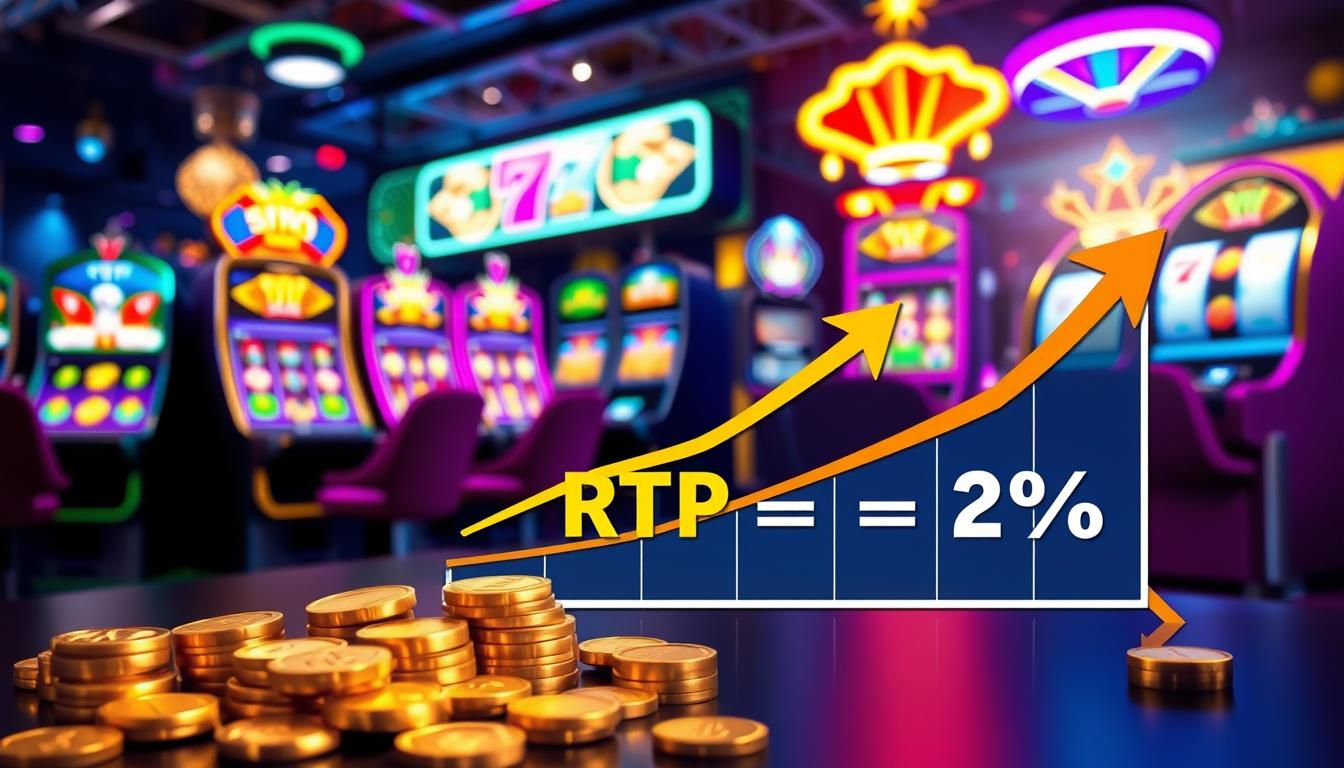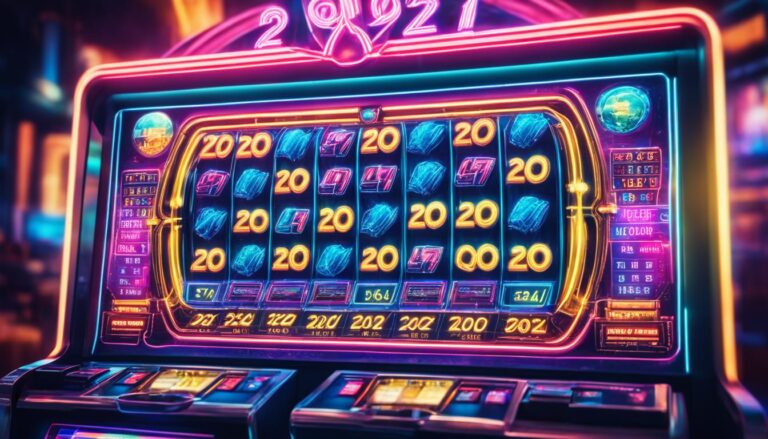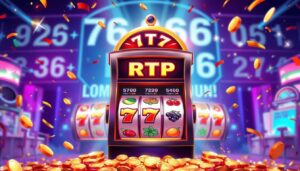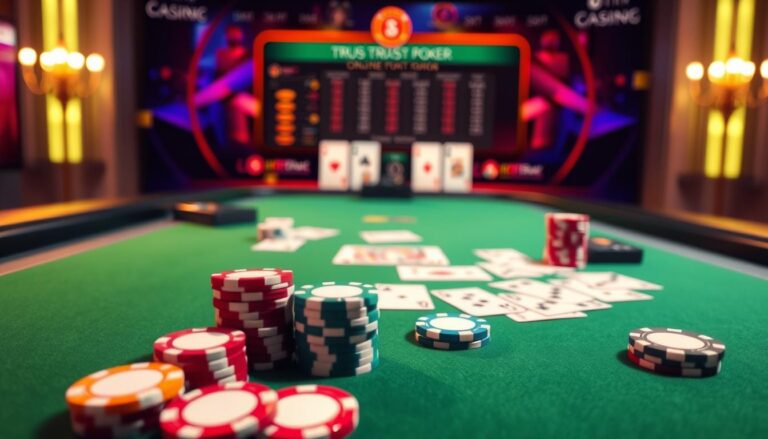Peluang menang slot sangat dipengaruhi oleh RTP (Return to Player), yang menunjukkan persentase pengembalian dari total taruhan kepada pemain. A higher RTP means a better chance of winning over time, making it a crucial factor for anyone playing slot games. Understanding RTP helps players choose games with a greater likelihood of payout.
Many slot providers, including popular ones like Pragmatic Play, share RTP information for each game, allowing players to make informed decisions. By focusing on slots with higher RTP rates, players can improve their chances while managing expectations about short-term results.
Besides RTP, other factors like volatility and betting strategy also impact winning opportunities. However, RTP remains a reliable starting point for assessing the potential success of a slot game, especially in 2025 when many new high-RTP titles are entering the market.
Understanding RTP in Online Slots
Return to Player (RTP) is a key metric that helps players evaluate slot machines. It reveals how much of the total wagered money a slot is programmed to return over time. Understanding RTP provides players with realistic expectations and influences which games they may choose to play.
Definition of RTP
RTP stands for Return to Player, expressed as a percentage. This percentage indicates how much a slot machine will pay back to players from the total bets made over the long term. For example, a slot with an RTP of 96% theoretically returns $96 for every $100 wagered.
RTP is calculated over millions of spins and does not predict short-term results. It represents the expected payout if the game is played continuously under ideal conditions. The difference between 100% and the RTP is known as the house edge, which is the casino’s advantage.
How RTP Affects Slot Outcomes
RTP influences the expected returns but does not guarantee specific results. A higher RTP means the slot returns more money to players over time, but it does not ensure frequent wins. The actual outcomes depend on the game’s random number generator, which ensures spins are independent and unpredictable.
Players should combine RTP information with volatility levels to understand both payout size and win frequency. Games with high RTP and low volatility usually offer modest but more frequent wins, while high volatility slots might pay bigger rewards less often, despite similar RTP percentages.
Misconceptions About RTP
One common misconception is that RTP guarantees individual wins, but RTP is an average over millions of spins, not a predictor of immediate results. Players cannot “beat” RTP or expect to recover losses based on this number.
Another myth is that slots “due for a win” based on RTP, which is false because each spin is independent. Players often confuse RTP with hit frequency; RTP only shows theoretical return, not how often winning spins appear.
Understanding RTP correctly helps players make informed decisions and manage their bankroll effectively.
Impact of RTP on Winning Opportunities
The RTP percentage directly influences the expected return over time but does not guarantee short-term results. Variance plays a critical role in how often and how much a player wins. Selecting slots based on RTP requires balancing these factors for strategic gameplay.
Relationship Between RTP and Win Rate
RTP, or Return to Player, is the theoretical percentage of wagered money a slot will pay back over an extended period. A higher RTP (e.g., 96% or above) means players can expect to lose less on average compared to lower RTP slots.
However, RTP does not affect how frequently wins occur. It strictly measures long-term payout potential, not short-term chances. Players may experience long losing streaks on high RTP slots or receive frequent small wins on lower RTP slots.
Understanding this distinction helps players set realistic expectations. Essentially, RTP reflects overall profitability rather than immediate win frequency.
Variance and Its Role
Variance, or volatility, defines how wins are distributed in a slot game. High variance slots offer larger but less frequent wins, which can affect perceived winning chances despite a good RTP. Low variance slots provide smaller, more regular payouts but generally less dramatic wins.
Variance influences a player’s risk tolerance and session length. By combining RTP with volatility information, players can choose slots aligning with their preferred balance between risk and reward.
In practice, a slot with a high RTP but high variance might deliver rare big payouts, while a low variance slot with a moderate RTP produces steady wins.
Choosing Slots Based on RTP
When selecting slots, players should prioritize RTP but consider additional factors for better results. Here is a simple approach:
- Check RTP values: Prioritize slots with RTP of 96% or higher.
- Assess variance: Match slot volatility with personal risk preferences.
- Consider paylines and bonuses: These can impact overall winning potential and gameplay enjoyment.
Using RTP as a guide helps maximize expected return but should not be the sole criterion. Combining RTP data with volatility and bonus features enables more informed game choices.
Top Strategies to Maximize Slot Win Potential
Maximizing slot wins requires a careful approach to money management, strategic game choices, and making full use of available offers. A combination of these elements can increase the chances of success while keeping losses controlled.
Bankroll Management for High RTP Slots
Effective bankroll management is essential for playing slots, especially those with high RTP (Return to Player). Players should set a fixed budget before starting and avoid exceeding it, ensuring controlled losses.
Using smaller bets spread out over more spins helps maintain playtime and increases the likelihood of hitting winning combinations. Tracking wins and losses regularly enables better decision-making on when to continue or stop.
A sound practice is to allocate a portion of the bankroll specifically for high RTP slots, as these games statistically return more over time. This minimizes risk and allows the player to stay longer in the game.
Game Selection Tips
Choosing the right slot games is critical. Players should prioritize slots with an RTP of 97% or higher. Higher RTP means the game returns more to players over time, improving win potential.
Volatility is also a key factor. Low volatility slots pay smaller but more frequent wins, suitable for conservative players. High volatility slots offer bigger payouts but less often, ideal for those willing to take more risk.
Selecting games with bonus features like free spins, multipliers, and jackpots can further enhance winning chances. It’s important to review the game’s paytable and understand its mechanics before playing.
Utilizing Promotions and Bonuses
Casinos often offer promotions and bonuses which can significantly boost a player’s bankroll. These include welcome bonuses, free spins, cashback, and reload bonuses.
Players should carefully read the terms, focusing on wagering requirements and eligible games. Bonuses can extend playtime, allowing more spins on high RTP slots without additional deposit.
Combining bonuses with strategic betting increases the value and potential returns. Utilizing these offers systematically while sticking to budget controls is a smart approach to maximizing slot wins.
Common Mistakes When Assessing Slot RTP
Many players misunderstand how RTP impacts their chances of winning, leading to flawed expectations and strategies. Two frequent errors include taking short-term results at face value and overlooking the importance of game features beyond RTP.
Overestimating Short-Term Results
Players often assume that a high RTP guarantees frequent wins during a single session. In reality, RTP is a theoretical long-term average calculated over millions of spins.
Short-term gameplay can deviate significantly from the RTP value due to volatility. Players might experience long losing streaks or large payouts that temporarily skew results.
Believing a slot will pay back according to its RTP in a short time leads to poor bankroll management and unrealistic expectations. RTP should never be used to predict immediate outcomes but rather as a guideline for the potential returns over extensive play.
Ignoring Game Features
Focusing solely on RTP ignores the critical role of slot volatility and bonus features. Volatility determines how often and how much a slot pays, affecting the experience regardless of RTP.
Bonus rounds, free spins, and special symbols influence payout patterns and variance. Games with rich features may have lower RTPs but offer more chances for big wins or extended play.
Evaluating RTP without considering these mechanics gives an incomplete picture of a slot’s risk and reward balance. Players should analyze both RTP and game features to choose slots aligning with their goals and play style.
Understanding Slot Volatility and RTP Together
Slot volatility and RTP are two critical metrics that define how a slot game behaves in terms of payouts. Both influence the frequency and size of wins, but they impact gameplay in different ways. Knowing how they interact provides valuable insight for players selecting games based on their goals and risk tolerance.
Differences Between Volatility and RTP
RTP (Return to Player) represents the percentage of total wagered money a slot returns to players over time. For example, a 96% RTP means the slot pays back $96 on every $100 wagered in the long run. RTP is a theoretical value calculated across millions of spins.
Volatility, or variance, measures the risk level of a slot. High volatility slots pay larger wins but less frequently. Low volatility slots offer smaller, more consistent payouts.
| Metric | Definition | Impact on Play |
|---|---|---|
| RTP | Percentage paid back to players over time | Indicates expected payout rate |
| Volatility | Frequency and size of wins | Influences win consistency and size |
While RTP shows how much a slot pays back, volatility reveals how those payouts are distributed during gameplay.
Optimal Combinations for Consistent Wins
Slots with high RTP and low volatility tend to offer more reliable returns with steady, smaller wins. This combo suits players who prefer longer sessions with less risk.
Conversely, low RTP combined with high volatility can lead to bigger payouts but with longer dry spells. This appeals to players chasing large jackpots and willing to accept greater risk.
A balanced choice often involves RTP above 95% paired with medium volatility. This setup provides a decent chance for meaningful wins without excessive risk.
Players should consider bankroll size and play style when choosing the best RTP-volatility combination to match their strategy.
How to Find RTP Information for Slots
RTP, or Return to Player, percentages are often available but can vary in how and where they are shown. Players need to know where to look within casinos and which external sources provide the most accurate and trustworthy RTP data.
Where Casinos Display RTP
Casinos typically show RTP information in the game’s lobby or on the slot’s details page. For online slots, players can find RTP by clicking the information icon, often marked as an “i” or gear symbol, which opens game rules and statistics.
In physical casinos, RTP is sometimes displayed on the machine screen or within the help menu. However, older machines might not provide this directly, requiring players to ask casino staff or consult published materials related to the specific slot.
Reliable Sources for RTP Data
Outside casinos, reliable RTP data comes from official game developers, regulatory bodies, and specialized RTP databases. Websites dedicated to tracking RTP percentages, like FindMyRTP, compile updated RTP stats across many slot games.
Players should prioritize sources with verified information and official licensing. Checking multiple sources helps confirm accuracy and ensures the RTP data reflects current game settings, especially since some slots may adjust RTP rates per casino or region.
Legal and Regulatory Factors Influencing RTP Disclosure
The disclosure of Return to Player (RTP) percentages is governed by specific legal standards and consumer protection policies. These guidelines determine how much information must be shared and ensure fairness in gaming operations. Understanding these factors helps players assess slot fairness and operator trustworthiness.
Regional Licensing Requirements
Licensing authorities in various regions impose strict rules on RTP disclosure to maintain market integrity. For example, jurisdictions like Nevada and New Jersey require licensed operators to publish RTP data openly. This ensures players receive verified and consistent information before wagering.
Non-compliance with these standards can lead to penalties or loss of license. Licensing bodies often conduct audits and require operators to submit RTP reports regularly. This regulatory oversight restricts casinos from manipulating payout percentages.
Different countries have distinct licensing frameworks, but most emphasize accuracy and transparency in RTP reporting. Operators must follow these rules to legally operate and maintain player confidence.
Transparency and Player Protection
Transparency in RTP disclosure directly supports player protection by informing gamblers of expected payout rates. Clear RTP information helps manage player expectations and reduces the risk of misleading claims.
Regulators increasingly mandate accessible RTP data to promote responsible gambling. Players can verify game fairness, which discourages exploitative practices by operators. Transparent RTP reporting also counters fraudulent behavior and builds industry credibility.
In many markets, RTP figures must be published on casino websites or game interfaces. This practice aligns with broader consumer protection laws designed to provide clear, truthful, and relevant gambling information to users.
Conclusion
RTP (Return to Player) provides a statistical estimate of how much a slot machine returns to players over time. Higher RTP values generally indicate better chances of recouping stakes in the long run. However, RTP does not guarantee wins in any single session.
Volatility also plays a critical role in outcomes. Low volatility slots tend to offer frequent but smaller wins, while high volatility games deliver larger payouts less often. Players should consider both RTP and volatility to align with their risk preference and play style.
Choosing slots with RTP of 96% or higher is recommended to increase expected returns. Yet, it is important to remember that slot games remain games of chance and luck. Strategic knowledge of RTP and volatility supports smarter decisions but cannot eliminate unpredictability.
| Factor | Impact on Play |
|---|---|
| High RTP | More favorable expected returns over time |
| Low Volatility | Frequent, smaller wins |
| High Volatility | Larger, less frequent wins |
Understanding these elements empowers players to make informed choices. Risk management through bankroll control complements knowledge of RTP and volatility for a balanced gaming experience.



























+ There are no comments
Add yours